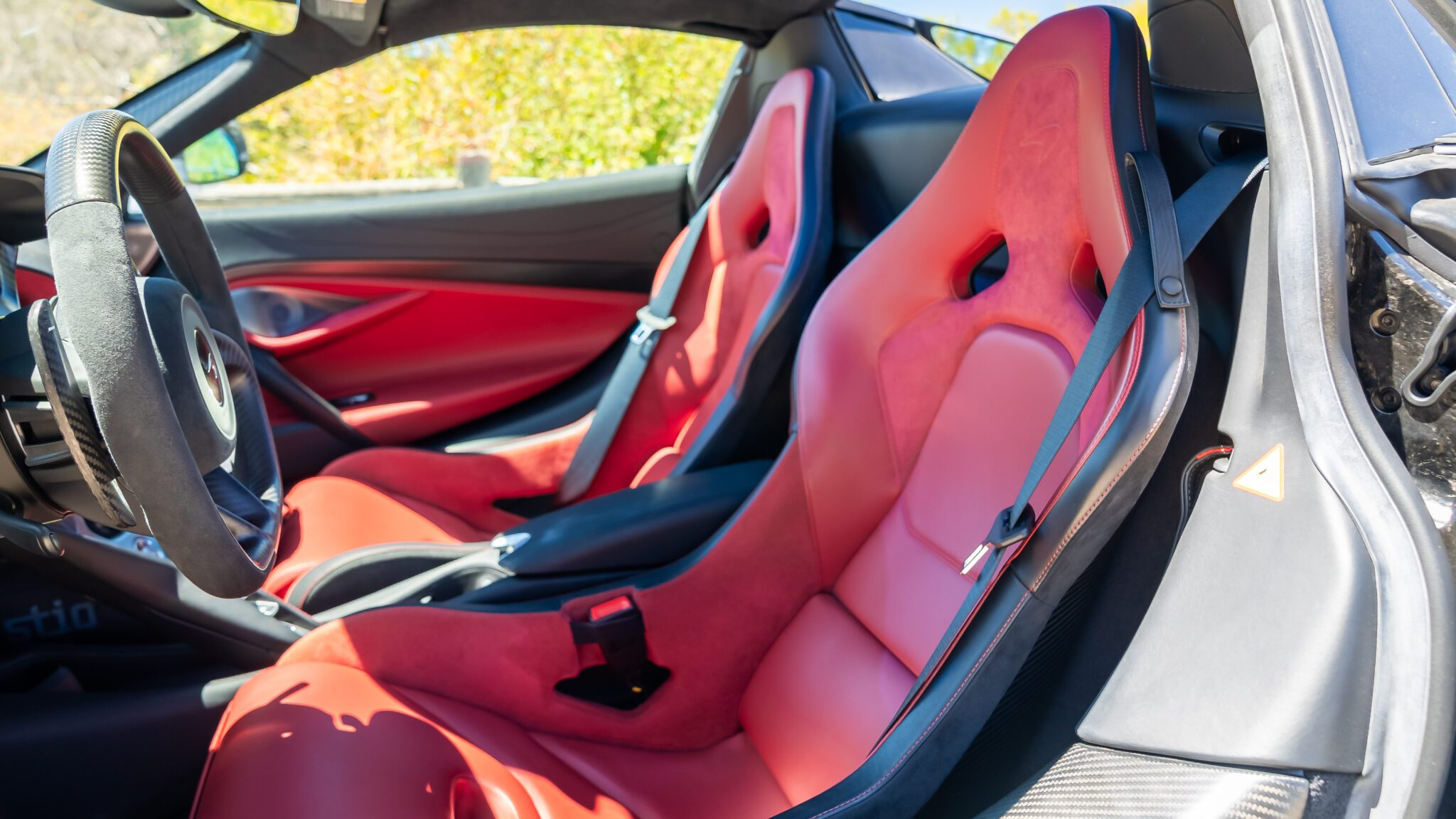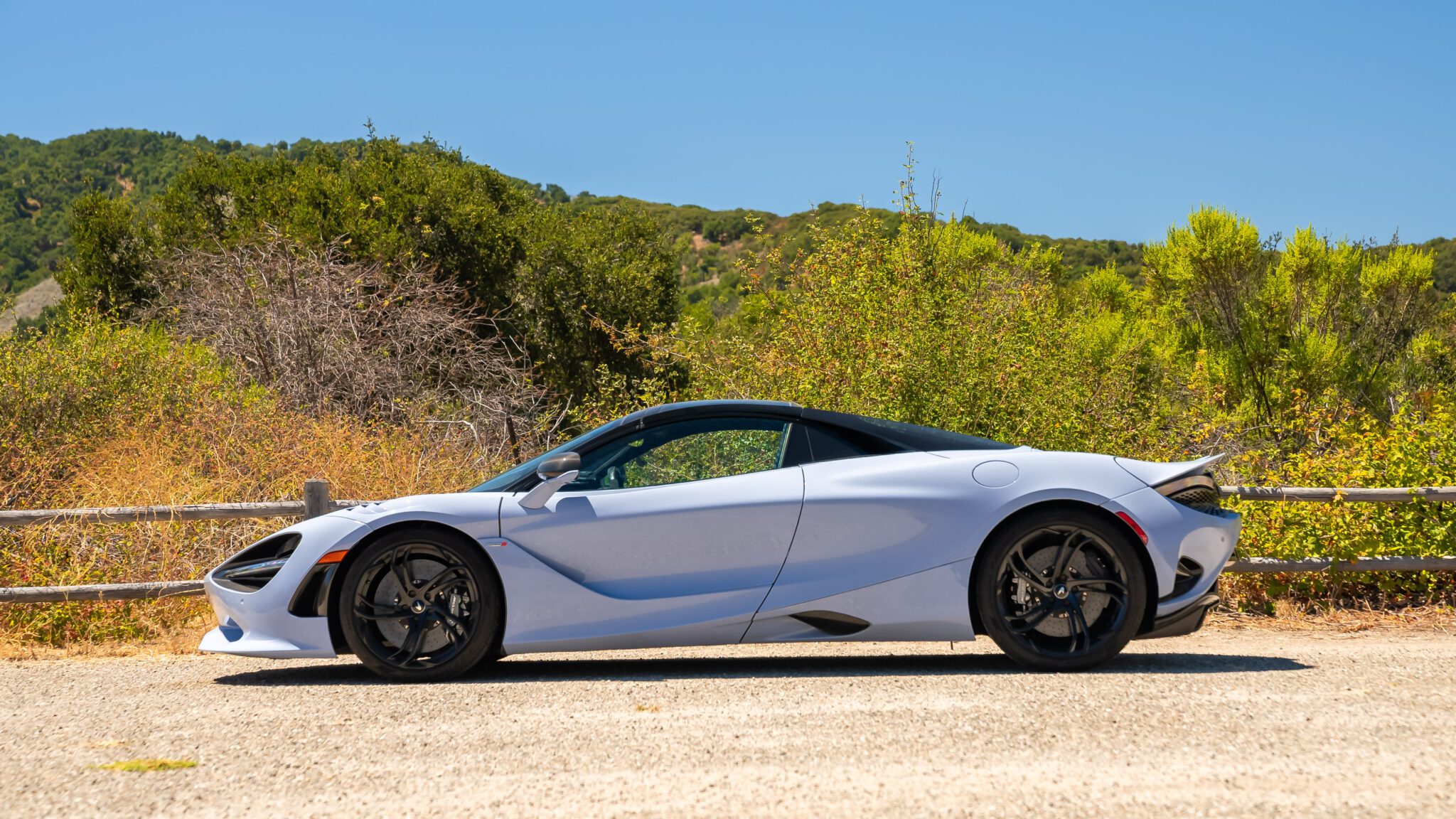
Roadtripping a McLaren Supercar 750S Reveals the Strengths of The Modern Supercar
The days of hustling up a twisting road in a supercar required precision gear changes, precise steering inputs, or meticulous throttle application are long gone. Even though we would like to think that we are driving a supercar with a million horses and flames shooting out of it, thanks to the modern stability and traction system, most supercars are not more difficult to drive than the VW Golf. It’s not necessary to always be in tune with your surroundings. You can speed up by pointing the nose and squeezing the throttle.
The more smug among us, including myself, will quickly point out that the invisible hand of technology often creates a layer between driver and car. We’ve lost something fundamental to what makes a supercar a real supercar, in the pursuit of performance. As I drove the McLaren 750S Spider back from Monterey to Los Angeles, I began to question the point of view that I had held for many years. McLaren did not have in mind a 350-mile summer drive with temperatures often reaching triple digits when they developed the successor to the 720. Its driving spirit is to make it a more exciting machine. The 740 horsepower, 590 pound feet of torque, and faster 60mph (2.7 second) are all thanks to the shortened gears from the 765 LT. Also, its steering, brakes and suspension have been tuned to increase driver feedback. As I slid into the carbon fiber racing seat, which reminded me of P1, none of that mattered. As Car Week 2024 was coming to a close I threw my bag into the passenger’s seat and stuffed a carry on and a garment bag inside the 750. Then, I settled in its narrow bucket seats. This fire-breathing car would be forced to become a grand tourer today.
On the surface, the McLaren 750S Spider, which costs $348,700, plus a destination fee of $5,000, seems like a bad car. Stuart Little would want to pack lightly with its 5.3 cubic foot of storage in the front. If you don’t, there isn’t a lot of room in the cabin. You can only do this if you are traveling with a companion. Flying solo, the 750 has a beautiful red leather and suede bucket seat for a passenger. It’s a great shelf, but it is pricey.
With my luggage secured, I started the twin turbocharged 4.0 liter V8 in the car behind me. The Spider’s roof, which can be folded down in just 11 seconds and at speeds up to 31 miles per hour, was then dropped. The 750, like every other McLaren, has the ability to customize the suspension and powertrain. You can enjoy the sound of its exhaust while you waft through town without having to worry about firm shocks. McLaren’s unique design lets you upshift and downshift with a single paddle. It’s the little things. It’s the little things.
Leaving Carmel, CA behind, I jumped onto the 101 heading south, following a delightfully loud Lamborghini Revuelto driven by a close friend. The McLaren 750S moved into the left lane, as the speedometer climbed. Its engine and dampers were set to comfort mode. The suspension’s lightweight springs, new dampers and hydraulically linked suspension absorb road imperfections without causing excessive harshness. And despite its shorter gear set, it cruises quietly in 7th while music supplied by its new Apple CarPlay connectivity emanates from its speakers.
Unfortunately, the Driving Assist Pack available for the Artura Coupe and Spider doesn’t make its way to the 750S’s option list. You won’t have access to blind-spot detection, adaptive cruise control or cross-traffic detector, all of which are excellent and make McLaren’s entry-level model more useful. Call it Stockholm Syndrome if you want, but by the second hour of driving in the 750S, its bucket seats inspired by P1 were no longer an issue. They’re narrow but supportive and reduce strain on the lower back. You’ll need to roll the seats back to get out. I mean, jump out. But once you’re in, they are very comfortable. The base Comfort seat is more suited to longer drives but lacks the lateral stability you need for an athletic car. As counterintuitive and as strange as it sounds, I have found time and again that the Super-Lightweight carbon fiber buckets – also known by their other name, Senna seats – are best for my 5’11 frame. The Senna seats are the best fit for my 5’11” frame. They come in two sizes and are adjusted by the padding thickness. They’re also wider and more comfortable than P1 seats, making them easier to enter and exit. It doesn’t hurt either that they look great.
As Santa Barbara approached, I took a turn off the highway onto a set of twisty canyon roads leading down to the Pacific Ocean. The McLaren 750S transformed from a pseudo GT to the supercar it was meant to be when the top was folded, and the engine and suspension were set to Sport (Track mode is more theatrical and has smoother shifts to allow for faster lap times). I chased Revuelto for miles, diving around corners with the Mac’s impressive levels of grip, before shooting out the other side at incredible speed. The McLaren 750S is a modern supercar that feels old-school, but in the best way. The hydraulic steering provides the best feedback, letting you feel even the slightest bump. The brakes are activated by a firm press, but the feedback is clear. Its 3,170 curb-weight allows it to change direction in an instant. As the Pacific came into sight, it clicked. The same car cruised silently on the highway, carried a week of luggage and was still plush, despite having fixed buckets. While this can take away from the rawness, it’s worth it if the end result is a machine that you can use. What’s the point of a high-performance exotic car if you only drive it on rare occasions in perfect conditions? The McLaren finds the balance. It’s not the kind of car you’d drive every day if you were a masochist, but it is engaging enough to be driven without a stablemate. I drove it around Monterey to the grocery store and to various events, but still looked forward to a few highway hours. The need for dedicated Grand Tourers is diminishing as suspension technology meets more features-rich cabins.
If the lack of adaptive cruise controls on the 750S is any indication of the progress made by modern supercars in terms of usability, you can read my earlier article. Imagine if you asked the same question of a Lamborghini Murcielago, or Porsche Carrera GT 20 years ago. This would never happen. In the last 15-years, owners and journalists have demanded more versatility from these picture-perfect machines. After my experience with the McLaren 750S I am no longer convinced that this is a bad thing. It’s all about how the latest suspension and powertrain tech is used, but supercars are more exciting the more they can be used. We can use them, see and experience them better. We’ll find something to dislike about a car that is too extreme or too docile. We can all agree, however, that driving more interesting cars is always a good idea. You’d be hesitant to road trip in a Porsche or Lambo but not their modern replacements. As I arrived in Los Angeles, the sun was setting and I wished my trip would have continued. It’s still too early to predict what the next chapter in the story of supercars will look like. Will they be even more useful? More docile? Less exciting? The hybridized Artura or the Ferrari 296 are good examples of cars that make a great first impression. We know that the 750S is soon to be replaced by an V8 hybrid powered successor, but we hope the new car will have the same driving attitude as its predecessor.


